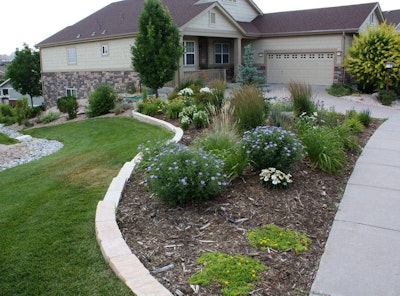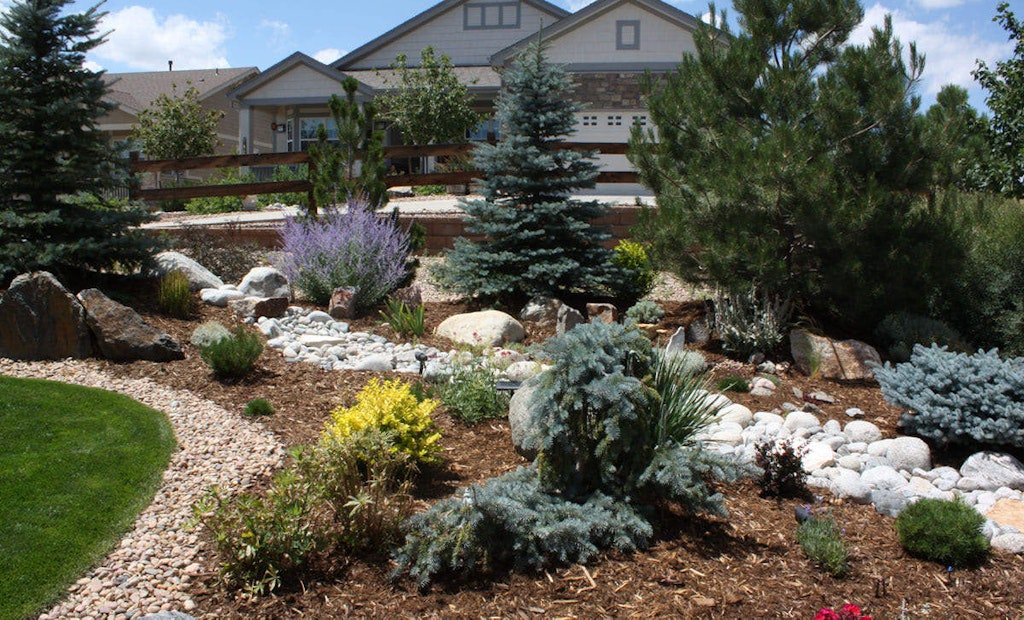Many years ago Aurora Water started reaching out to the community about how to conserve water. Customers apparently drank in the information.
Per capita water use in this Colorado city dropped nearly 39% from 188 gpd in 2000 to 115 gpd in 2020. As a result, the utility serves many more people with the same amount of water.
Aurora Water, which serves a city of about 386,000 and part of the surrounding area, has three water treatment plants that distribute about 28 mgd in winter and 75 mgd in summer. “It started mostly with education, and I believe there was a focus on youth education at the time,” says Diana Denwood, senior water conservation specialist.
Numerous offerings
“It has grown to encompass adult education. We’ve got informal adult education programs, multiple water conservation classes that we teach every year. This year there were over 25 classes. We’re kind of ramping things back up since COVID. Before COVID, we had over 30 classes per year.”
The classes are held in the utility’s demonstration garden, which shows off landscape plants that require little if any irrigation. Ranging from Sprinkler 101 to Installing Water Wise Landscapes and Building Your Own Drip Irrigation System, the classes are popular. Enrollment is capped at 30 people, and class registration is usually full.
“We also have things that are not obviously about water conservation but have something to do with having a water-wise landscape,” Denwood says. “For example, we have a Bee Condo Workshop that I’ve taught a couple times now.
“The idea is that you want to have water-wise flowering plants to feed the pollinator population, so let’s help that along by building bee condos. It’s not all directly about water conservation, but it’s adjacent, and it gets people into our water-wise demonstration garden.”
Many motivations
Some participants are motivated by the chance to save on their water bills, but the classes draw people for other reasons, too. “A lot of people are interested in having a prettier, more vibrant yard,” says Denwood. “You accomplish that by taking out boring Kentucky bluegrass and putting in xeric flowers. That’s much more exciting.”
Class participants also appreciate the different types of pollinators and other wildlife that are attracted to their yards after they remove some of their grass and plant flowers and shrubs that use less water. “Also, people are realizing that water is a very precious resource, and they want to be part of a real solution,” Denwood says.
Aurora Water describes plants that need less irrigation as water-wise. That’s defined as needing 15 inches or less of water beyond the 15 inches of precipitation the region usually receives annually. Some plants actually need no irrigation once they are established.
“Kentucky bluegrass in our climate needs 28 inches of supplemental water to thrive,” Denwood says. “A water-wise plant needs half the water or less.” The utility provides lists of plants that fit the criteria. They include more than 250 perennials, 200 shrubs, 40 grasses, along with seven trees.
“We don’t really push people to plant trees because they need more water, even in the winter if temperatures are warm,” Denwood says. “We don’t have a lot of trees native to the eastern plains of Colorado. We have cottonwoods, but they only grow in riparian areas. They need a lot of water. We encourage drought tolerant trees, which is a smaller list.”
Beyond education
The utility also provides free outdoor water use assessments. “It’s basically a full sprinkler system checkup,” says Denwood, “And we provide zone mapping, which is really important, especially for homeowner associations and large-property customers who often don’t have that basic information of where their controllers are and where all their zones are.”
Another outreach effort is the GreatScapes program for low-income property owners. Up to five properties per year receive water-wise landscapes at no cost. The landscapes use plants that require no irrigation once established, so the owners won’t have ongoing expenses for watering.
The landscape program also includes rebates for switching to water-wise landscapes and for water-saving irrigation system parts such as smart controllers, rain sensors and soil moisture sensors.
Aurora Water also promotes water-efficient landscaping with contests. For one, called Dreamscape, people submit videos that explain why they want a water-wise landscape. The entries are narrowed to five finalists, and the winner is then chosen by random drawing. The prize is a front-yard conversion to a water-wise landscape.
Another contest, held every year since 2013, has customers submit photos of their converted landscapes. The winner receives a $100 water bill credit. Twelve customers entered in 2022.
New lawns and new irrigation systems require a permit in Aurora. “We are checking on efficiency and making sure that the new seed or sod has the correct soil amendments to set it up for a healthy start, because healthy grass uses less water,” Denwood says.
Lawn watering restrictions are in place from May through September: customers can water no more than three times per week, and never between 10 a.m. and 6 p.m., the hottest and windiest part of the day when evaporation is the highest. Water monitors enforce the restrictions, usually responding to complaints from neighbors.
Inside the buildings
Beyond the landscaping initiative, the utility offers commercial and residential customers rebates for water efficient appliances like high-efficiency toilets that require just 0.8 gallons per flush. For low-income residents, Aurora Water works with the nonprofit Mile High Youth Corps to provide water-efficiency upgrades like aerators, showerheads and toilets for free.
Indoor water assessments are offered for residential and commercial properties. Every water fixture in the building gets inspected. In Denwood’s experience, some 75% of leaks are from toilets. “They waste thousands of gallons a month, sometimes quietly and sometimes not- so quietly,” she says.
The city’s latest conservation weapon is smart meters, which will eventually be installed on every account. “Smart meters can really dig into your use,” Denwood says. “You can see how much water is flowing through a meter per hour, down to 15-minute intervals if you want to.”
Aurora also shares data and recommendations with customers. They can sign up for a Know Your Flow email, which gives them a monthly report card about their water use compared to the recommended use for that property, even considering irrigation: “Irrigation is complicated, because landscapes are complicated. It really helps people to compare their actual usage to recommended usage.”







